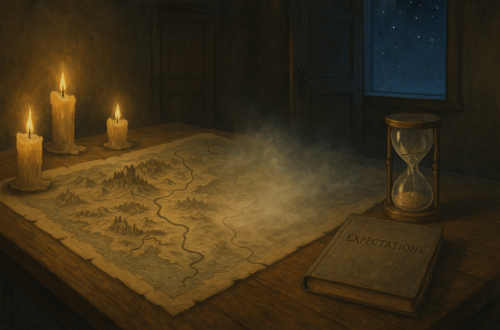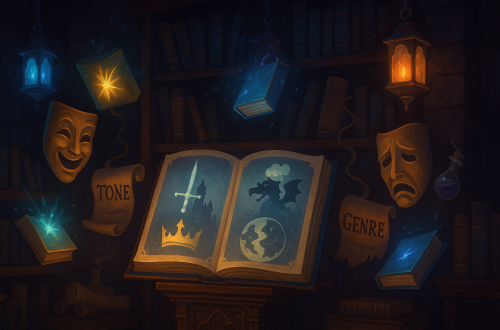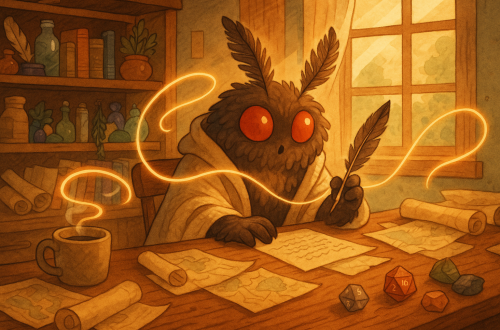The Comfy Manifesto
Or: Why Safety Matters in Tabletop Role-Playing Games
When people hear the phrase “comfy games,” they often picture a table where nothing bad ever happens—no monsters, no conflict, no risk greater than a lukewarm cup of tea. Perhaps they imagine every adventure ending in a communal nap, every character a small woodland creature with a penchant for embroidery. And while I’d happily play that game (twice, even), that’s not quite what I mean.
“Comfy” was a deliberate choice—a word less aesthetic than “cozy,” less embroidered with lace, and more rooted in something essential: comfort. Not the absence of narrative tension, but the presence of emotional safety. It’s about creating a space where players feel supported, heard, and safe enough to explore bold ideas, take character risks, and maybe even cry over an imaginary raccoon.
Tabletop games, after all, aren’t just games. They’re collaborative stories, social experiences, tiny theaters of the mind where we test our mettle, flirt with the fantastical, and work out our hero complexes in dramatic accents. And just like any meaningful storytelling environment, they need structure and safety to truly flourish.
Safety in a TTRPG isn’t about nerfing the narrative. It’s not about bubble-wrapping the world or stripping it of challenge. It’s about making sure the people at the table—the actual humans rolling the dice—aren’t being harmed in the process of pretending. It means ensuring that trauma stays fictional, that surprises aren’t cruel, and that the tension comes from what might happen to the character—not what might be said to the player.
Because real emotional vulnerability? It’s the secret sauce of good roleplaying. The best stories come from players who feel comfortable enough to be brave, to try strange things, to fail magnificently or succeed heartbreakingly. But that kind of creativity blooms only in trust-rich soil. If someone fears being mocked, ignored, or emotionally ambushed, they’ll pull back. They’ll armor up. And suddenly, the game isn’t fun—it’s a performance, or worse, a hazard.
This is where the Game Master—or whatever term your table prefers—comes in. The GM isn’t just the narrator or the rules referee. They’re the steward of the table’s emotional ecology. They set the tone. They model respect. They wield the invisible ladle that stirs together story, safety, and shenanigans. It is, I would argue, a sacred calling.
A comfy game, then, is not a lesser game. It’s not milquetoast, sanitized storytelling. It’s a game where the stakes can be high because the people are safe. Where characters can suffer, triumph, or become slightly cursed fungi, and the players remain intact—respected, cared for, and delighted.
So no, comfy doesn’t mean easy. It means intentional. It means that fun never comes at someone’s expense. It means the laughter is brave, the sorrow is shared, and the dragons—yes, there can still be dragons—are battled in the bright light of mutual trust.
And if all that makes you picture a cryptid in a warm hoodie, holding a clipboard and a cup of cocoa, quietly watching over the storm?
Well. That’s the comfy side.
And we’d love to have you here.




